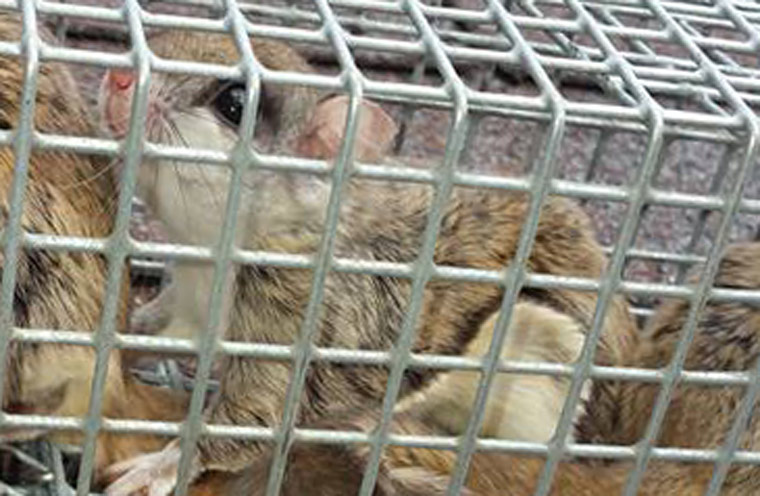- info@wildlife-removal.com
Call us for help in your town
Wildlife Removal Education
Best Ways to Trap or Exclude Flying Squirrels
Need flying squirrel removal in your hometown? We service over 500 USA locations! Click here to hire us in your town and check prices - updated for year 2020.
Despite being utterly adorable and mesmerizing in many ways, gliding through the air effortlessly and with grace, flying squirrels are real havoc-inducing creatures when they move in. They can chew through electrical wires, wooden foundations, and even the exterior or drywall of your home, getting to all the same places that rats can. And, once flying squirrels have paved the way, rats and mice have a pretty free pass to get in whenever they like.

Not just content with chewing through your home, wires, and even some of your personal belongings, there is a rather dangerous disease associated with the gliding, fluffy creature — sylvatic typhus. A disease that is passed on via contaminated or infected lice, the earliest symptoms are very similar to the flu or a common cold, and this makes it harder to diagnose. Although rare, when left untreated, sylvatic typhus can be deadly, causing problems with the respiratory system. This alone can be dangerous to those with existing respiratory conditions.
Then there are the parasites themselves to worry about — fleas, ticks, mites, and those pesky lice that may or may not be infected with sylvatic typhus, as well as the rabies virus. Documented cases of rabies in flying squirrels is quite rare, but it can and could happen to you. We’re sure that changes your thoughts slightly on how to deal with this apparently small but rather deadly creature. We definitely wouldn't recommend that you get too close.
Exclusion devices and methods are the best approach to take when it comes to a number of wild animals, and this is definitely the case for flying squirrels. These repeater traps or exclusion devices are perfect for when you don’t really want to get too close to whatever you're capturing, and you also would rather deal with the situation humanely. For the record, many repellents, poisons, and even live trap-and-release methods are not actually humane. Poison doesn't work half as quickly or effectively as you’d think. Many of the repellents that you’re sprinkling around for various wild critters are more dangerous than you give them credit for, including moth balls and ammonia-soaked rags. Live cage traps mean that you need to release the animal once it has been captured, and these creatures can travel for vast distances, as well as call huge spaces their home ranges. You would need to travel a pretty long distance away from your property to make sure it can't come back, and even then, it probably wouldn't be long enough. If the animal does find its way home, unless you have thoroughly sealed up your home, it can get right back in. It often does too. We've encountered more cases than we can remember of homeowners trapping and releasing a wild animal, only for the very same wild animal to come right back within a few short days or weeks. As you can imagine, it's incredibly frustrating.
Whatever kind of trap you decide to use, you should know that pooping them inside your attic probably isn't going to have much of an effect. They need to be outside of your attic, around the hole that the creatures are using to get in and out. In some cases, this can be more than one hole, especially if you have a large group of them on your hands. If you do, you will need more than one exclusion device or repeater trap.
You should only focus your attentions on trapping the most-used holes. Putting these traps on lesser-known patches might just result in the capture of one or two of the flying squirrels, at a push, but you’ll have much more success if you seal up all smaller holes, leaving just one or two of the big ones, with the traps attach.
Exclusion devices are better than traps. Traps mean that you need to do something with the animal, and in many cases, nuisance wildlife can only be released on the land on which it was captured. This is all good and well if you are confident of your attempts to seal up your building, but if you're not, releasing the animal on your own property is a foolish mistake. Exclusion devices, on the other hand, mean that the animal can't get in once it has left the building, and it is then forced to find a brand new home of its own accord. The problem will no longer be yours, and you won't have needed to interfere too much in order to make it happen. Your responsibility now is to make sure that no more wild critters can get in, and the only way to do this is to seal up all holes. You will need to perform a very thorough inspection, before and after your sealing efforts. One missed hole really could spell disaster, with the problem starting up all over again.
Go back to the Flying Squirrel Removal page, or learn tips to do it yourself with my How to Get Rid of Flying Squirrels guide.


















